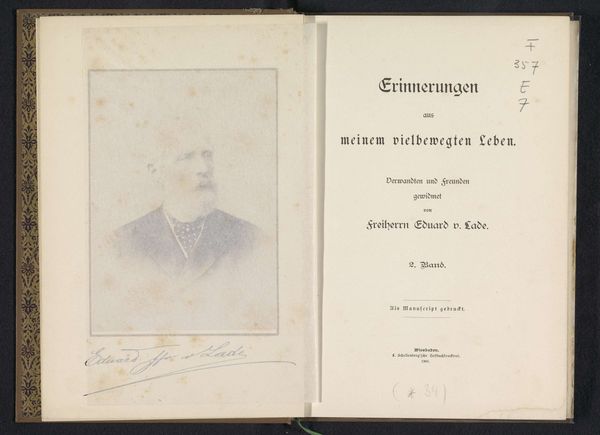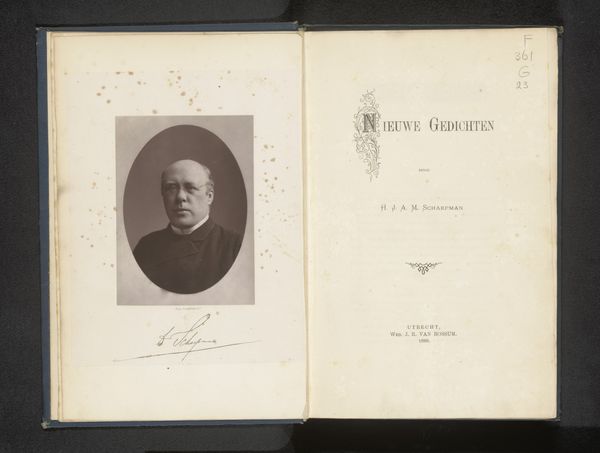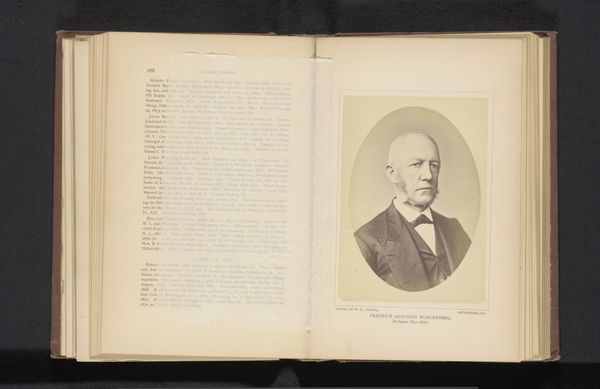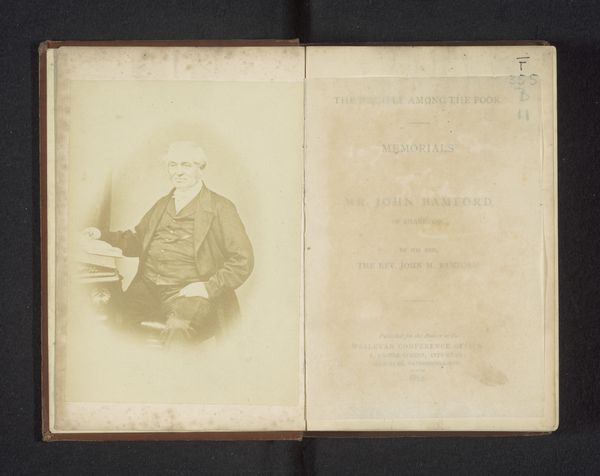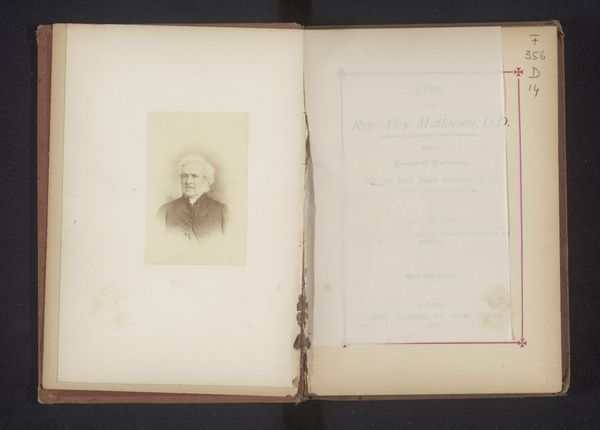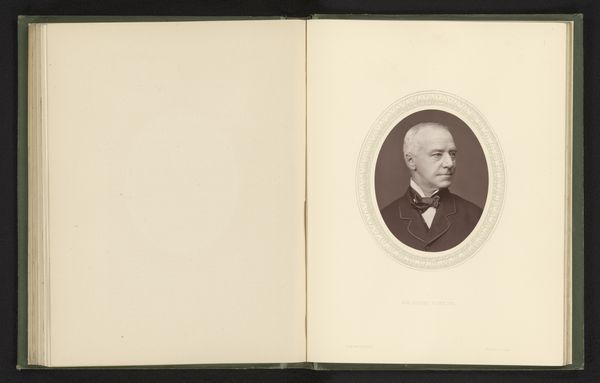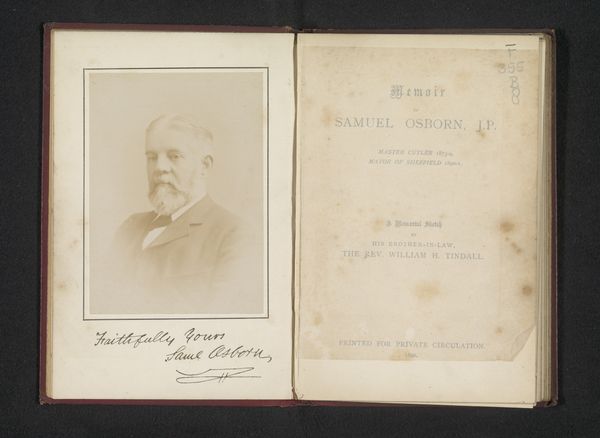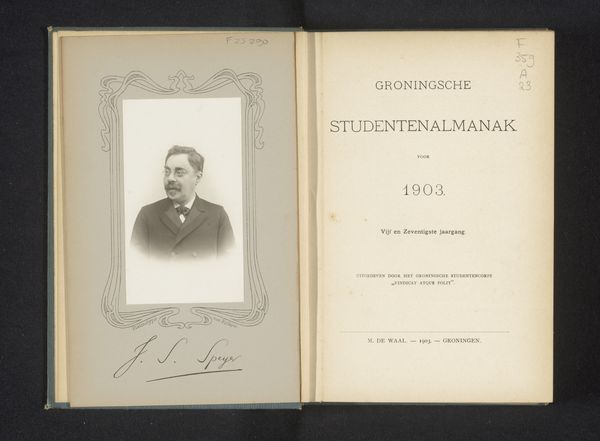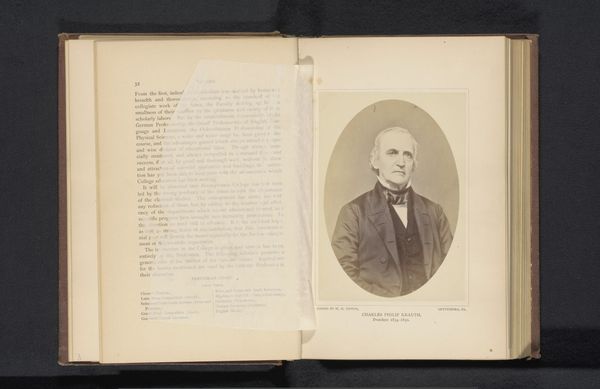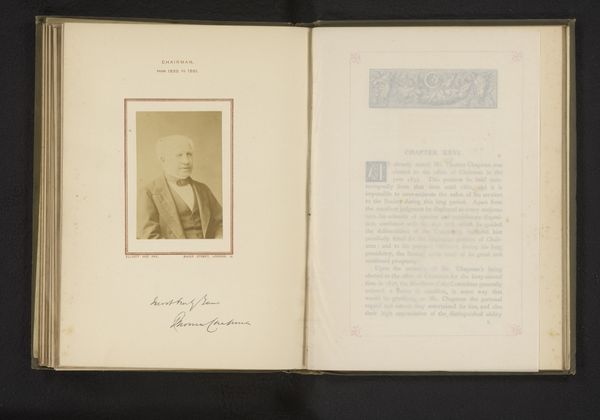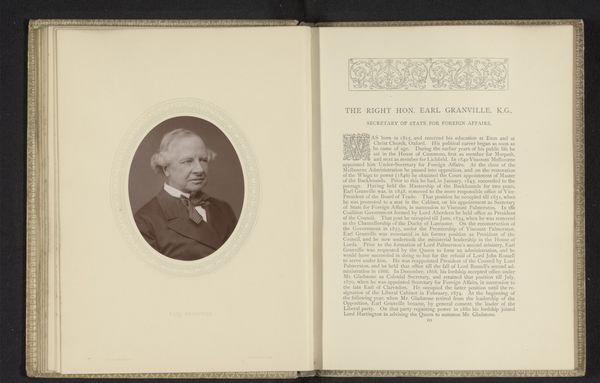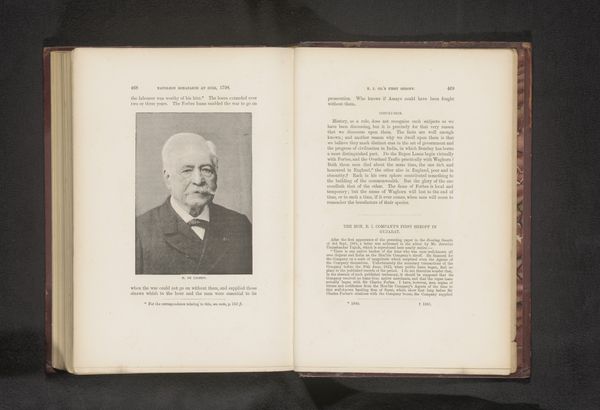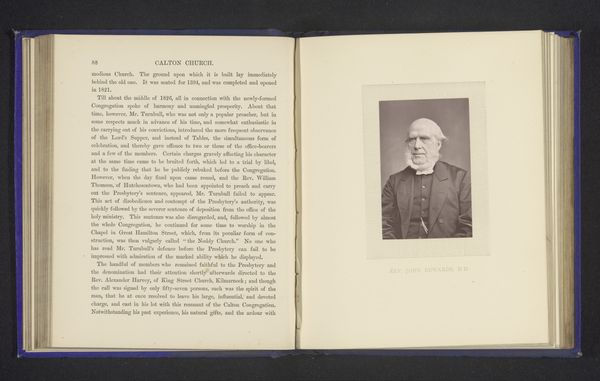
Portret van Jacob Domela Nieuwenhuis, hoogleraar rechtsgeleerdheid in Groningen en rector magnificus van 1898 tot 1899 before 1899
0:00
0:00
print, photography, albumen-print
#
portrait
# print
#
photography
#
modernism
#
albumen-print
Dimensions: height 99 mm, width 63 mm
Copyright: Rijks Museum: Open Domain
Curator: This is a fascinating historical document – a portrait of Jacob Domela Nieuwenhuis, Professor of Law in Groningen and Rector Magnificus from 1898 to 1899. This albumen print resides within a student almanac. Editor: There’s a somber formality about it, wouldn't you say? The monochrome tones amplify the stern expression, set against the backdrop of what seems to be the almanac’s pale, aged pages. The portrait appears fragile. Curator: Exactly! And it speaks to the socio-political function of these images at the time. As a figure of authority and academic prominence, Nieuwenhuis would have been represented in a very specific way to reinforce that position. Editor: So, the very act of capturing and reproducing his image here becomes a form of social engineering, an act of maintaining the status quo within the academic institution. Were similar portraits found with other leaders? Curator: Indeed, they were. Examining similar portraits in other almanacs and institutional records reveals common tropes like formal dress, controlled expression, and a focus on conveying intellect and seriousness – a deliberate construction of authority. The album itself, as an object, plays a part in how academic power structures play out through student communities and broader networks of intellectual thought. Editor: It's more than just an innocent photograph in an album. It's a visual assertion of power relationships, a subtle communication of institutional values to students. You think about students flipping through and studying such images and how that frames their perspective, even unconsciously. Curator: Precisely. Understanding the social and political contexts in which this portrait circulated lets us better understand the power dynamics at play. Editor: I suppose, I had simply initially thought the solemnity was meant only as a reflection of this gentleman’s disposition. Curator: Fair point, but isn’t it always rewarding to consider the greater forces around a portrait like this one? Editor: Absolutely, a crucial reminder that images, especially those from the past, carry embedded narratives that extend far beyond their subjects' surface.
Comments
No comments
Be the first to comment and join the conversation on the ultimate creative platform.
